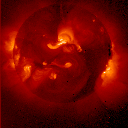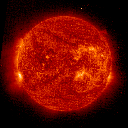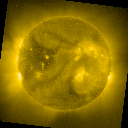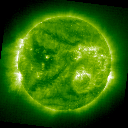




 i
iCurrent Ham Sattelite Orbit Information
Hmmn... I haven't worked RS-12/13 in years, I wonder when it will pass overhead again?
Once again, NASA has come to our rescue. Click Here for NASA's J-Track system. This system keeps track of Ham sattelites, as well as weather sattelites and orbiting spacecraft. It is self-updating, all you need to do is leave your browser open. No more special software, no more downloading Keplerian elements, just point and click!

Current HF Propagation Conditions
Okay, so you are in Boston, your buddy is in Seattle, and you want to work him on HF, but what band should you use?
For current ionospheric conditions, click here for IPS Radio & Space Services. They have propagation maps based on current (within the hour) readings, as well as predictions.

Current Solar Conditions
First, the NOAA solar dashboard...

Ever since the correlation between sunspot numbers and RF propagation was first noticed, many hams have paid close attention to the activities and moods of the sun. It didn't take long for us to figure out that the Maximum Useable Frequency from one given point to another was directly dependant on X-Ray bombardment from the sun. Unfortunately (or fortunately), the phenomenon that causes X-Rays to excite the ionosphere also prevents them from ever striking the earth, making terrestrially-based measurements difficult (but not impossible, the K index tends to correspond roughly with the X-Ray levels from the sun).
Now, thanks to modern technology and some pretty clever engineers, we (humanity) have sattelites in place to not only measure radiation levels, but actually give us images of the sun at some crucial wavelengths. These can be extremely useful in understanding the current state of our ionoshpere and therefore our bands, if you know what you're looking for.
Here are some current Ultraviolet and X-Ray shots of the Sun. The actual images
do not exist on this site, these are being pulled in from the SOHO
and Yohkoh solar imaging sattelites. If you notice any of these images are consistently broken
it's because they've moved them without me noticing, so please inform me and not
NASA (or ISAS, as the case may be). Simply click on one of the thumbnails below for a larger
image:


|

|
 |
 |
| Ultraviolet Image at 304 Angstroms 512 x 512 1024 x 1024 |
Ultraviolet Image at 284 Angstroms 512 x 512 1024 x 1024 |
Ultraviolet Image at 195 Angstroms 512 x 512 1024 x 1024 |
Ultraviolet Image at 171 Angstroms 512 x 512 1024 x 1024 |
Links to resources, clubs, and friends
There�s enough info in the above links to keep you satisfied until I get back to put some more up. As soon as I find a good ham-radio-related resource, I�ll post it here.